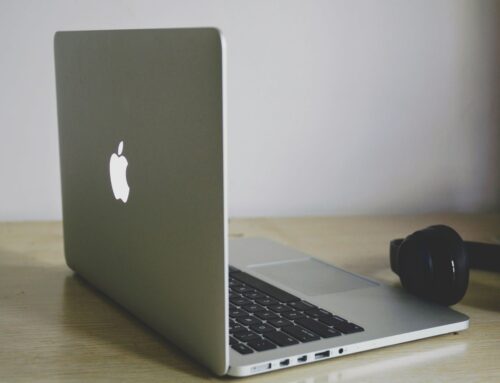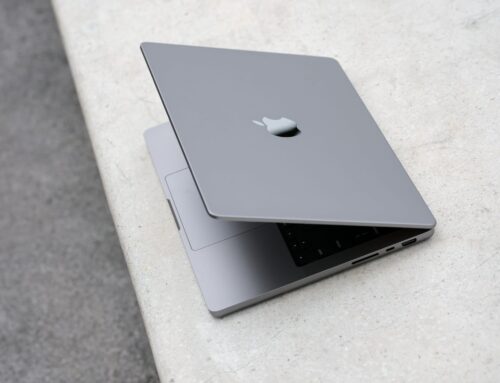The history of technology is marked by a continuous evolution of devices, and alongside that growth follows the ever-present need for repair and maintenance. As we rely more and more on laptops, Macs, desktops, and mobile phones to navigate our daily lives, understanding the challenges and innovations throughout the history of device repair offers valuable insights into its present state and future prospects. As your dedicated London-based device repair specialists, we wish to take you on a captivating journey through time, exploring how repair techniques and technological innovations have shaped the world of device repair through the ages.
From the early days of personal computers to the emergence of portable computing and the ensuing smartphone revolution, the development and evolution of device repair techniques have been as diverse as the devices themselves. As technology advances, so do the tools, methodologies, and skills required to maintain and repair our increasingly complex and sophisticated gadgets. In the following article, we’ll delve deep into this fascinating history, illustrating the importance of continuous learning and innovation in the field of device repair.
Join us as we traverse this captivating timeline, highlighting key moments and milestones that have revolutionised the techniques and tools used to diagnose and fix laptops, Macs, desktops, and mobile phones. Through this exploration, we’ll shine a light on the incredible progress we have made in device repair and maintenance, illustrating the expertise of professional repair services today. Ready to embark on this journey through time? Let’s get started.
The Dawn of Personal Computing and Device Repair
The journey begins in the late 1970s and early 1980s, with the emergence of personal computers. Early PCs, like the Apple II, IBM PC, and Commodore 64, were simple compared to current devices, yet they marked the beginning of an era of innovation and the growing need for repair techniques:
1.1 — DIY repair culture: Early personal computers were often assembled and serviced by hobbyists, fostering a DIY culture and introducing essential repair skills.
1.2 — Technician expertise: As technology advanced and PCs became more complex, specialised training and knowledge became necessary within the device repair industry.
1.3 — Component replacement: Early repair techniques primarily focused on swapping out faulty parts, laying the groundwork for a broader approach to device repair in the years to come.
The Advent of Portable Computing: Laptops and Macs
The late 1980s and 1990s saw the rise of portable computing, with laptops like the Toshiba T1100 and Apple’s PowerBook series gaining popularity. Focus shifted towards repairing and maintaining these portable devices:
2.1 — Miniaturisation: The push for increased portability led to smaller components, raising the bar for repair expertise by demanding precision and the development of specialised tools.
2.2 — Companies offering repair services: As the market for laptops expanded, manufacturers and third-party providers began offering dedicated repair services to meet the growing demand for technical support.
2.3 — Sophistication of repair techniques: Laptop and Mac repairs began to encompass a broader range of services, including hardware upgrades, cooling system maintenance, and display replacement.
Smartphone Revolution: A New Frontier for Device Repair
The early 2000s witnessed the beginning of the smartphone revolution, heralded by the release of the iPhone in 2007. With increasing performance and capabilities, the mobile phone repair landscape transformed significantly:
3.1 — Specialised repair services: The combination of touchscreen displays, advanced operating systems, and complex internal components led to specialisation within mobile phone repair services.
3.2 — Modular component designs: As smartphones evolved to be open to customisation, modular components encouraged a new level of user replaceability and repairability.
3.3 — Community-driven support: Online forums and video tutorials emerged as vital resources for users seeking guidance and solutions for basic device repairs, invigorating a culture of self-sufficiency.
Modern Developments in Device Repair Techniques and Innovations
Our journey through the history of device repair arrives in the present, as the industry adapts to the needs of laptops, Macs, desktops, and mobile phones in an ever-changing landscape:
4.1 — Repairability and right-to-repair movement: Consumers and advocacy groups are increasingly fighting for devices that are designed to be repairable and accessible, influencing manufacturers and repair services alike.
4.2 — E-waste reduction: The shifting focus towards repairing, rather than replacing, electronics stems from a desire to reduce e-waste and promote sustainability in the industry.
4.3 — Increasing accessibility of repair tools: The growing market for repair tools and resources enables users to tackle simple repairs on their own, fostering self-reliance within the community.
Charting the Evolution of Device Repair Expertise
Our voyage through the history of laptop, Mac, desktop, and mobile phone repair illustrates the fascinating progression of techniques, innovations, and expertise within the industry. As we stand at the forefront of a new era of increasingly complex devices, today’s repair professionals must be adaptable, informed, and skilled in order to meet the demand for premier device repair services.
Embrace the knowledge and expertise of our London-based device repair specialists, providing you with the highest standard of laptop, Mac, desktop, and mobile phone repairs you can trust. Drawing on the strength of this rich history, we are committed to delivering outstanding service and satisfying the needs of our valued customers. Contact Forest City Computer Repairs for computer repairs in London and more.







